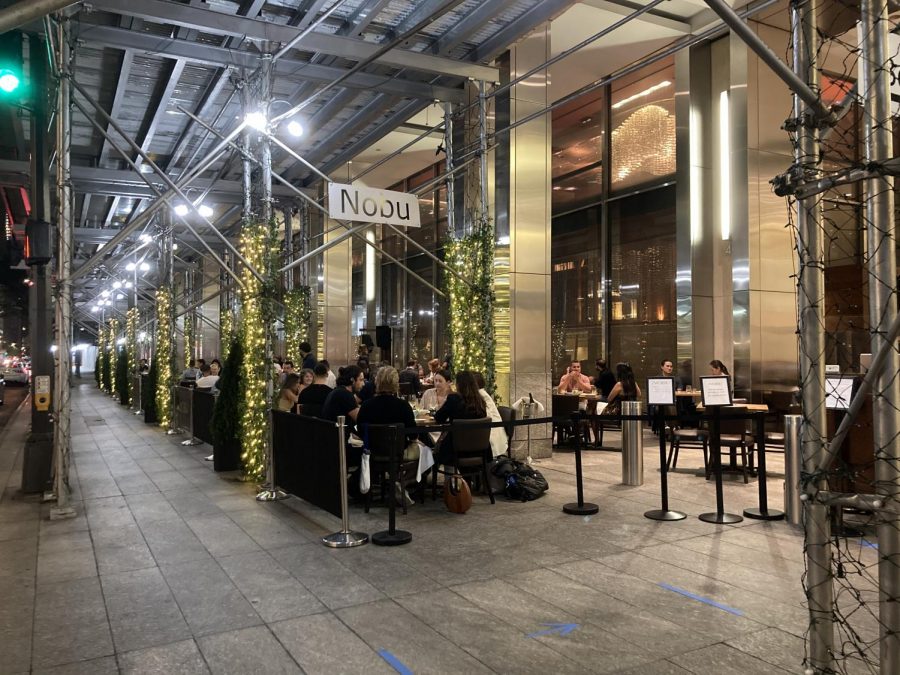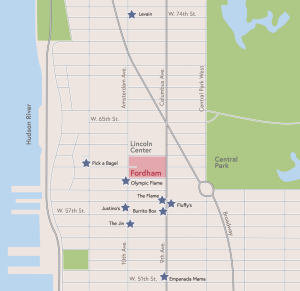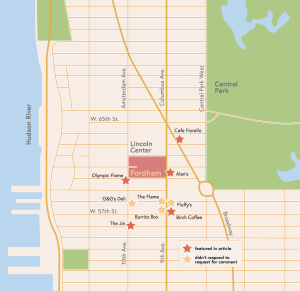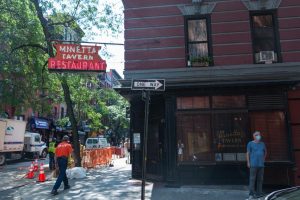New York: Putting the ‘in’ in Dining
What Fordham foodies can expect from indoor dining, reopening Sept. 30
Nobu, a Japanese restaurant, is expected to begin indoor dining following the New York City guidelines on Sept. 30.
September 30, 2020
The New York dining scene has been a business debacle for the past five months. The city has been a battleground for civil authorities and restaurant owners on a daily basis.
Given the prevalence of successful outdoor dining, some restaurants with access to the requisite outdoor space have managed to survive the onslaught of arrears of rent and other associated fixed costs. With the days getting progressively chillier, outdoor dining may soon lose its sheen even though it’s been extended for a year. Even though the average New Yorker’s appetite for dining is unparalleled, it is too far-fetched to visualize a New York couple gleefully chattering their teeth while food is being served to them on a snowy winter evening.
Indoor dining is set to open on Sept. 30 at 25% capacity for all restaurants. That being said, in order to minimize the transmission of the virus, enhanced filtration systems with a high price tag will be incorporated along with 6-foot social distanced seating.
They have that in Connecticut and its fine (in Connecticut) but NYC is not ready. Alex Gardner, GSBLC ’21
While theoretically indoor dining fits perfectly into the puzzle of post-COVID life, we need to consider the practical costs of implementing this newly instituted dining experience. Besides the exorbitant NYC fixed costs of operations, restaurants need to pay their experienced chefs and waitstaff a hefty salary to preserve their quality and image. In doing so, they will most likely end up racking losses while only operating at a severely limited capacity. Although the massive losses can be offset until the chilly winter days, these operational conditions spell uncertainty and dread for a lot of restaurants.
Nobu, a popular Japanese eatery in Midtown, is all set to open its indoor dining on Sept. 30. Given that the date is a week from now, the management has had to quickly develop the logistics of implementing this scheme.
On another cheerful note, Le Botaniste, a health food chain, is all set to implement its indoor dining scheme on Sept. 30 with aplomb. While measures are being taken to introduce barriers between tables, the management is optimistic about the future of indoor dining given that they are participating in the prevention of the coronavirus in a spirit of solidarity. “If we can prevent the spread of COVID 19 in any way while instituting the indoor dining conditions, we would be proud New Yorkers,” Le Botaniste’s manager said.
Eating out in NYC can be expensive, and part of the appeal is the energy, environment, etc, which isn’t quite the same with masks and 25% capacity. Asher Booz, restaurant-goer
While restaurants are ambivalent toward these new measures, restaurant-goers have mixed feelings about them, too. “I feel like the atmosphere is going to change. Reservations will be hard to come by. I will have to make connections and tip well at my favorite spots,” Alex Leibovitz, a native connoisseur and student at Dartmouth College, said.
“Probably not a good idea for anyone to go if they are in a high risk group or frequently around people who are. That being said, eating out in NYC can be expensive, and part of the appeal is the energy, environment, etc, which isn’t quite the same with masks and 25% capacity,” Asher Booz, a frequent restaurant-goer, said.
Fordham students also remain ambivalent. “They have that in Connecticut and its fine (in Connecticut) but NYC is not ready,” Alex Gardner, Gabelli School of Business Lincoln Center (GSBLC) ’21, said. This is understandable, as New York City is only the most densely populated city in the United States. We wouldn’t want to trigger a second wave of COVID 19.
“I would go for indoor dining if it’s important, like a family dinner or friend’s birthday,” Annie Wu, GSBLC ’22, said.
While indoor dining is currently in its nascent stage, the fate of New York’s dining scene can only be known in the recent future and is not to be hypothesized. Despite the glaring shortcomings of this new era of dining, we must appreciate the resilience of New York restaurants and restaurant-goers who haven’t lost their appetites, even in these testing times.















